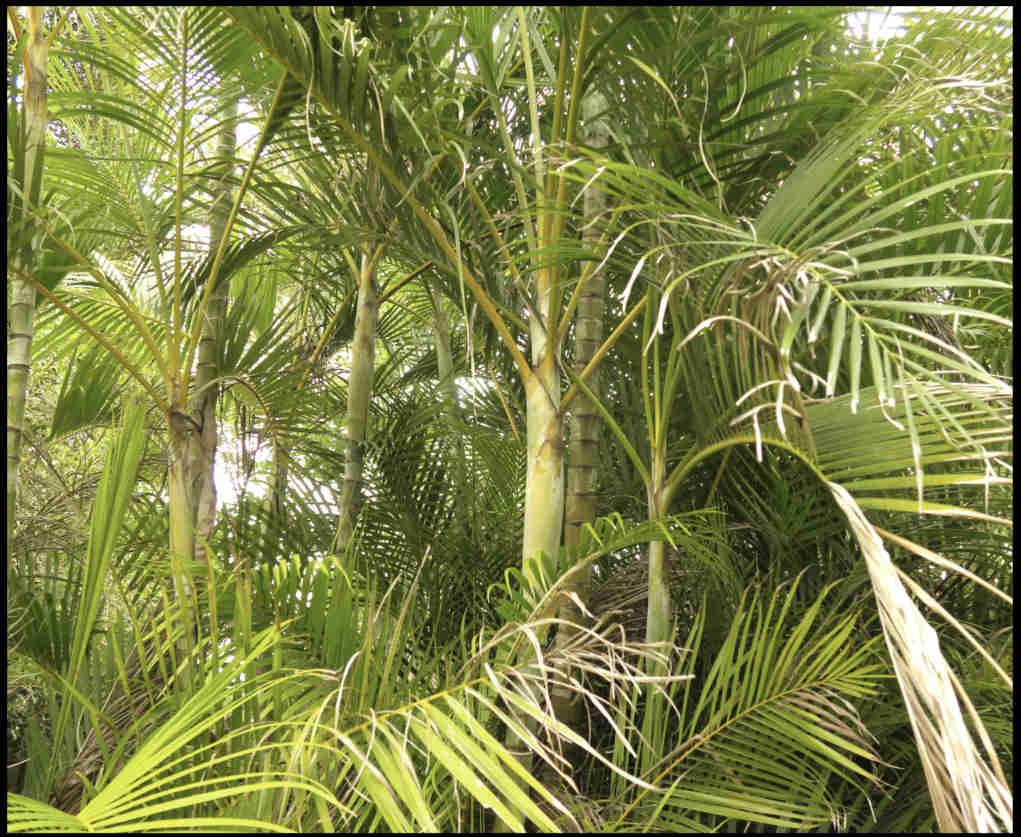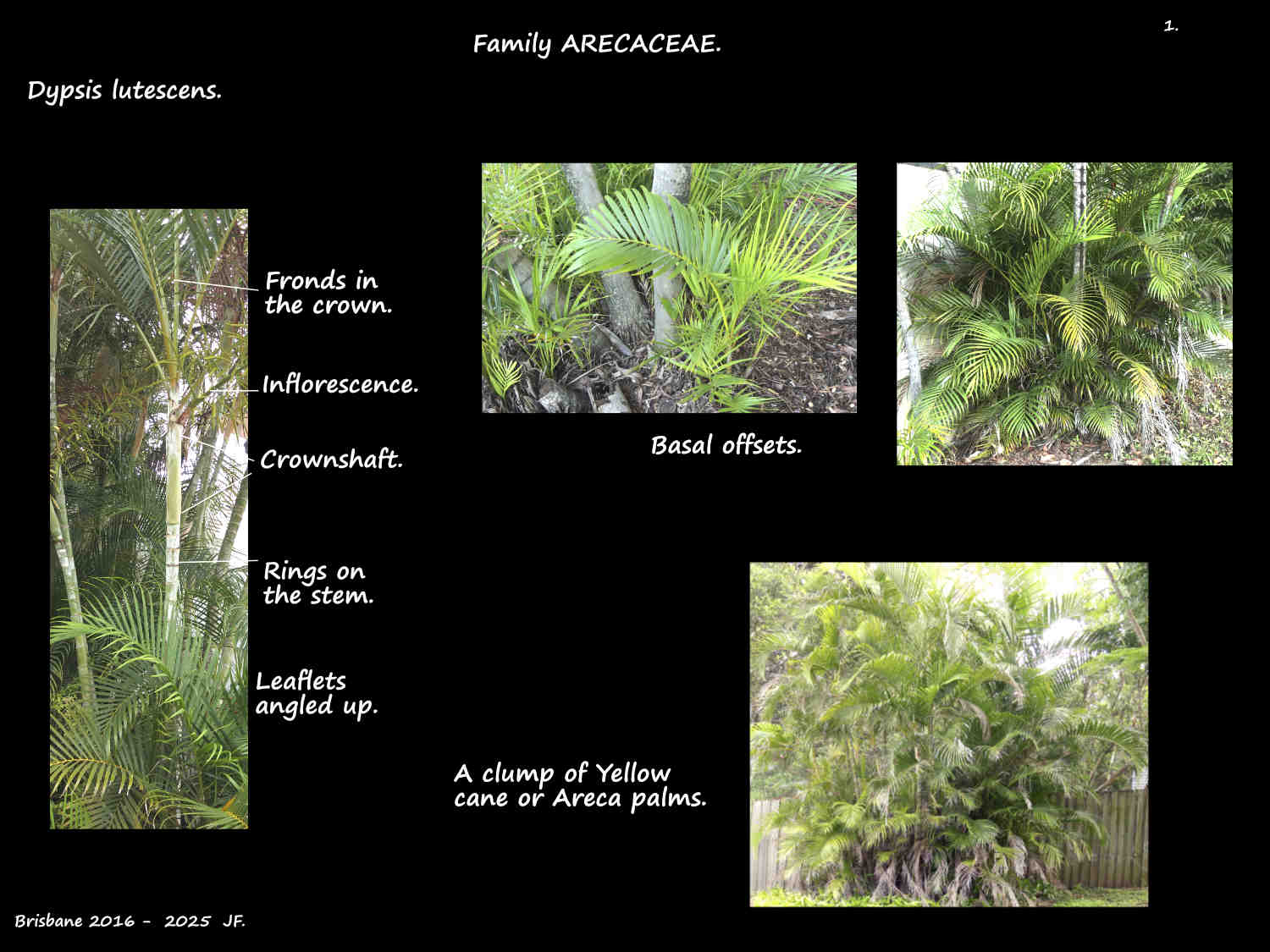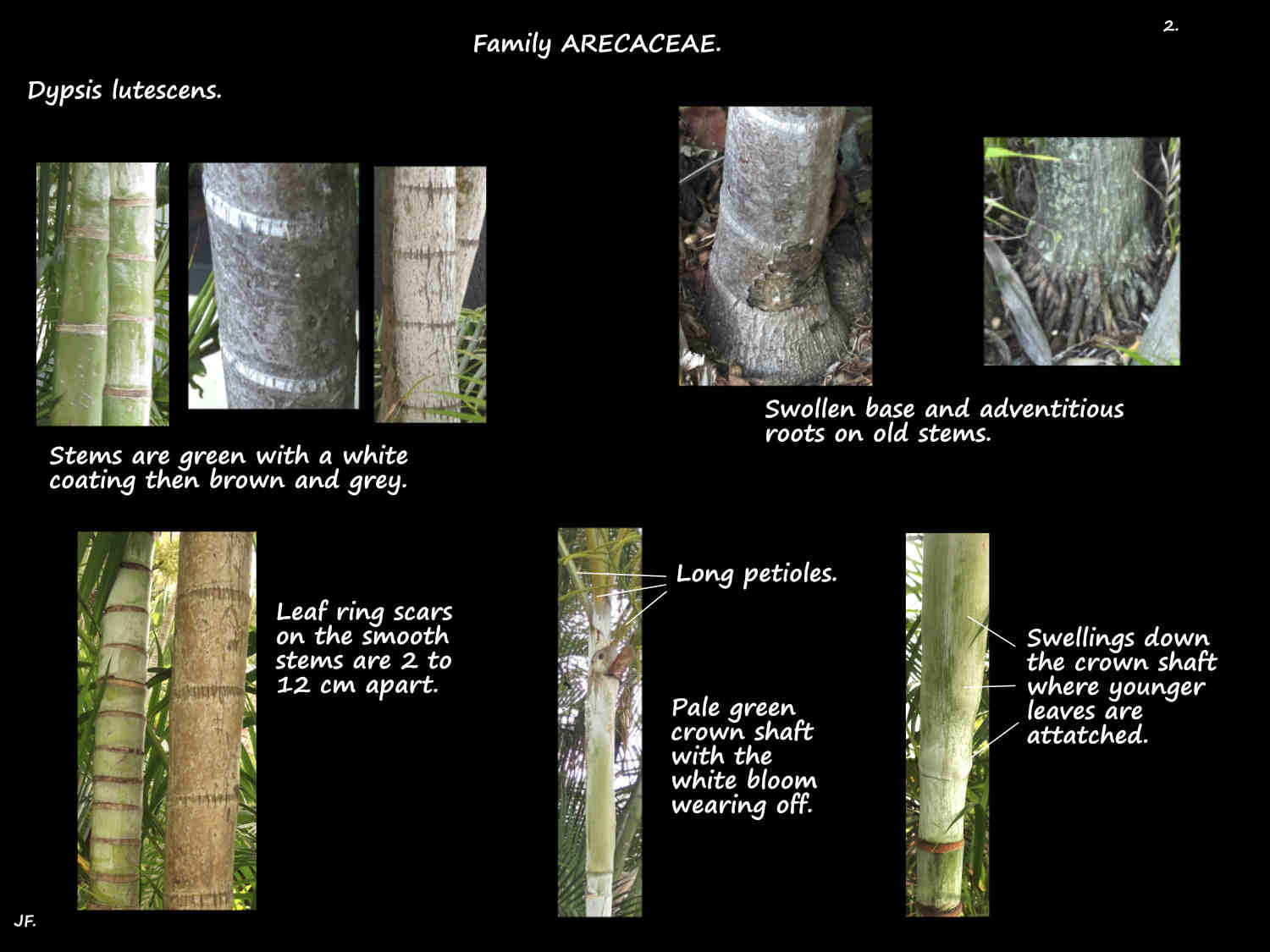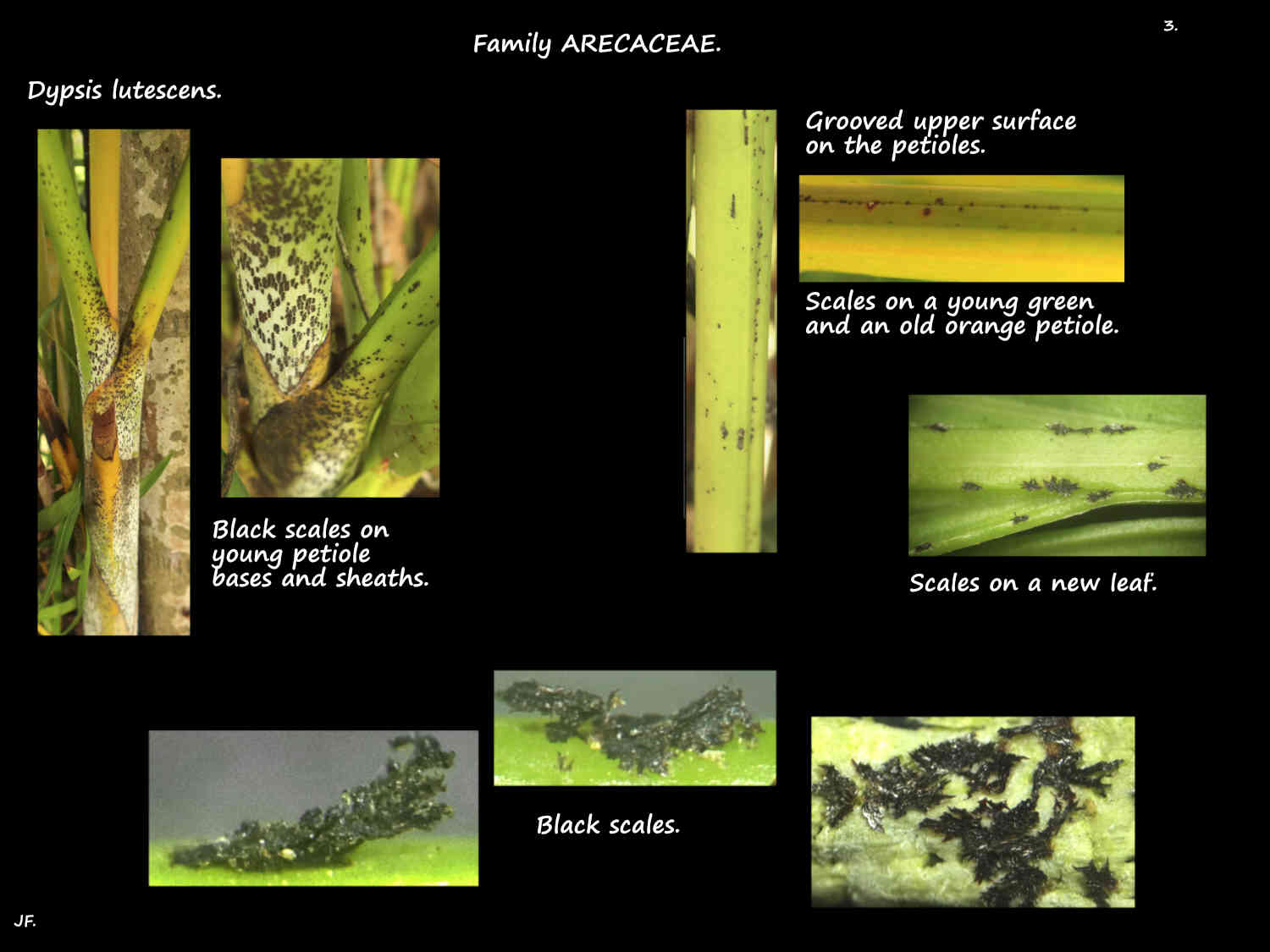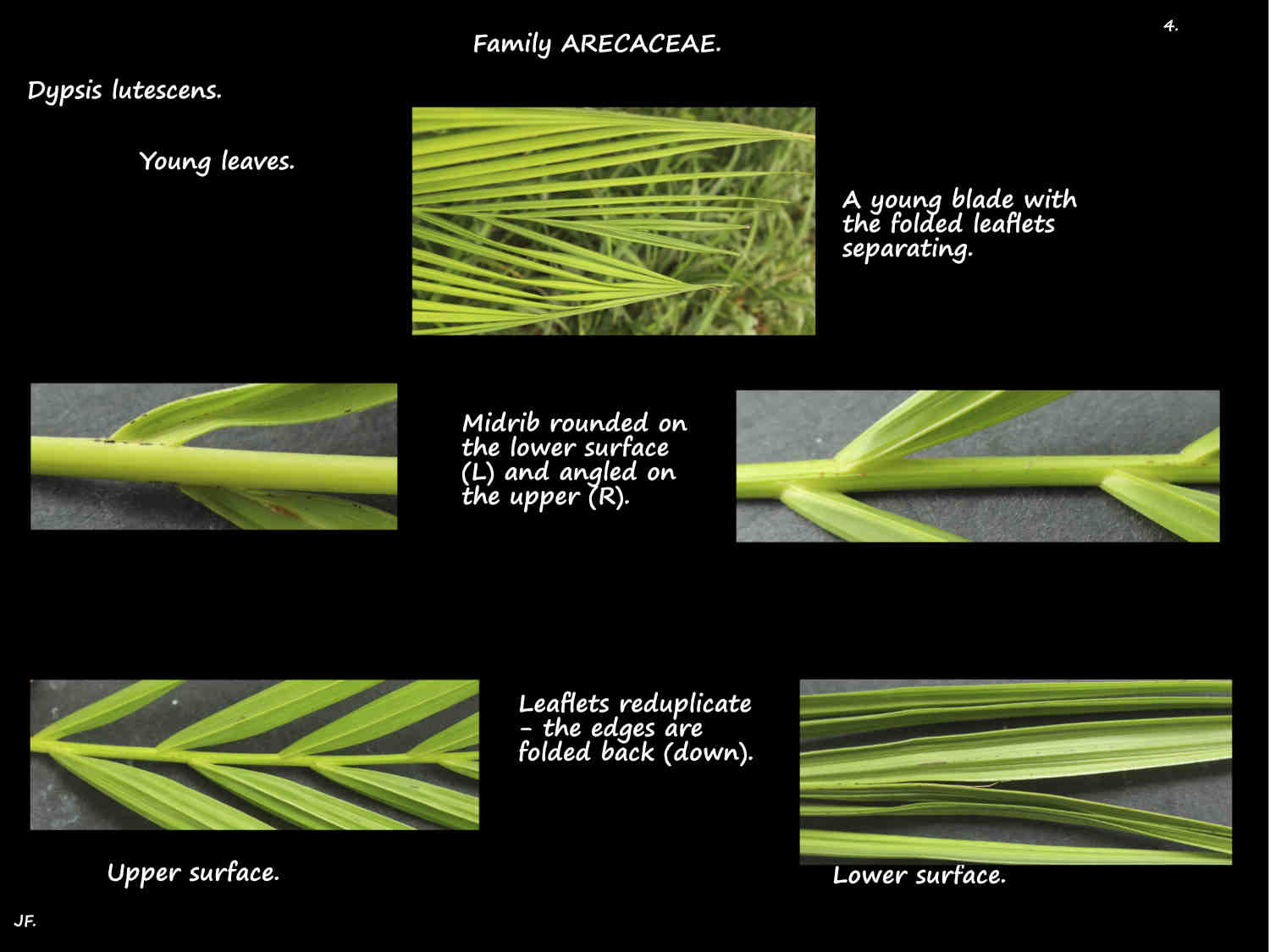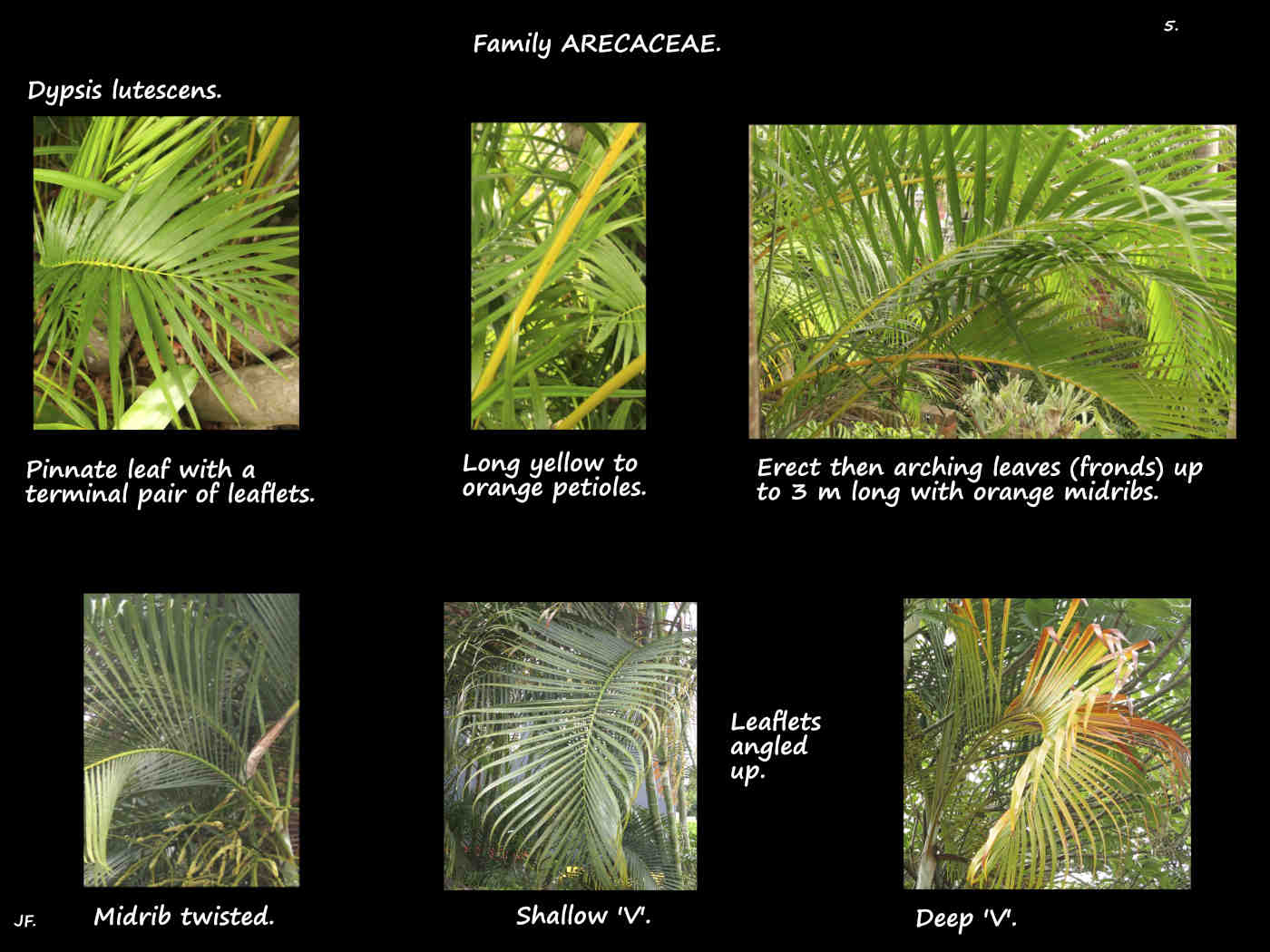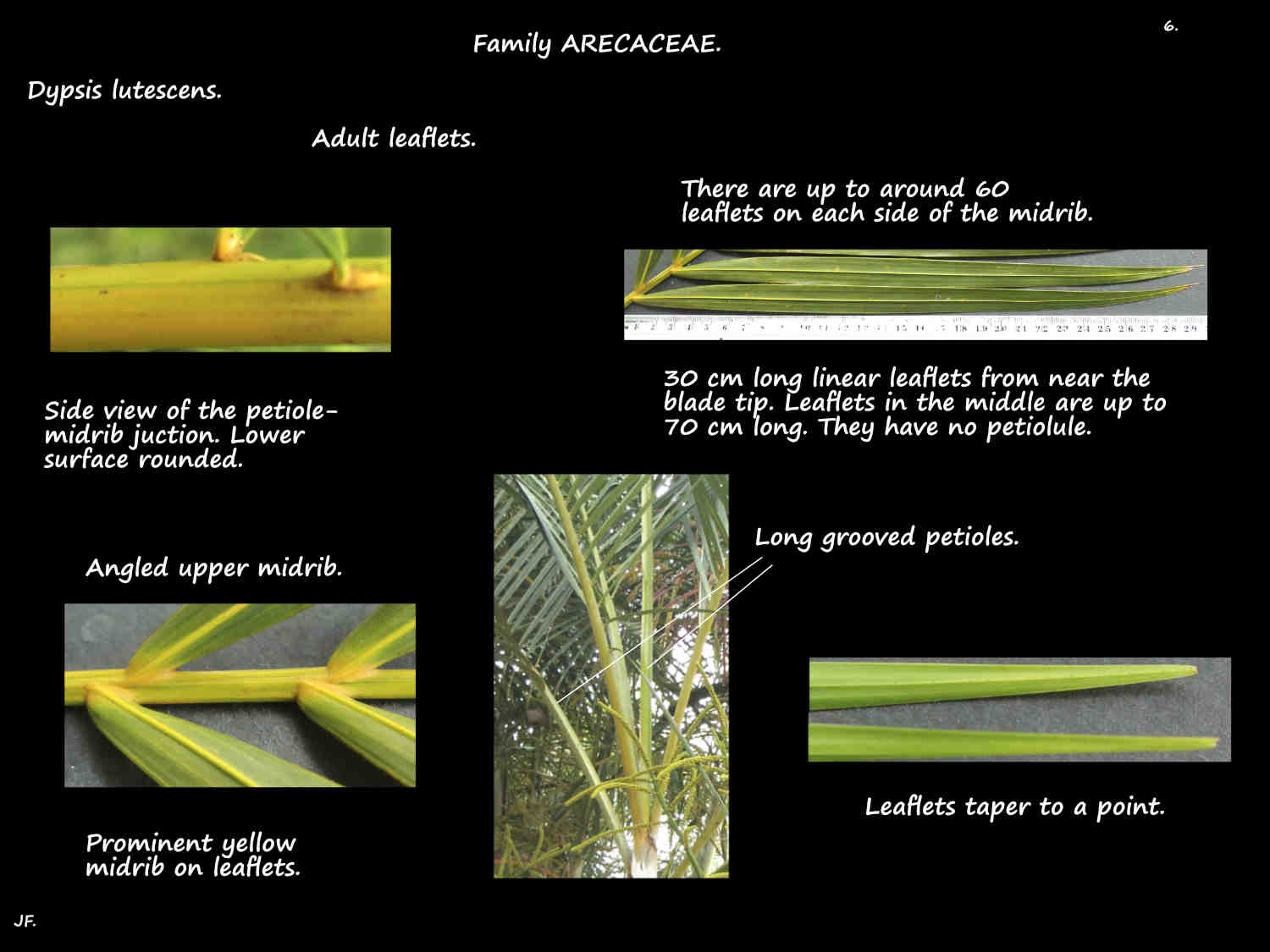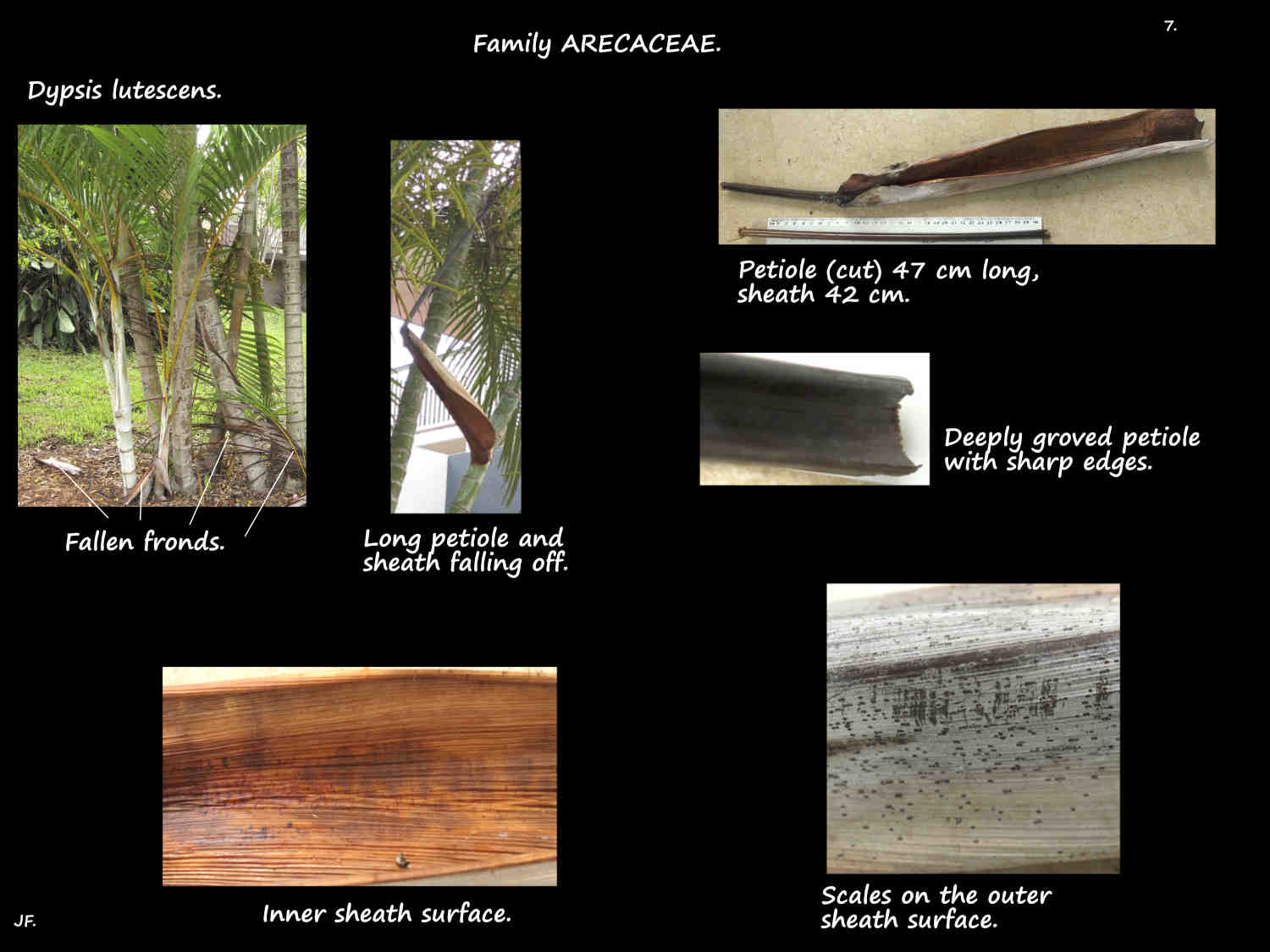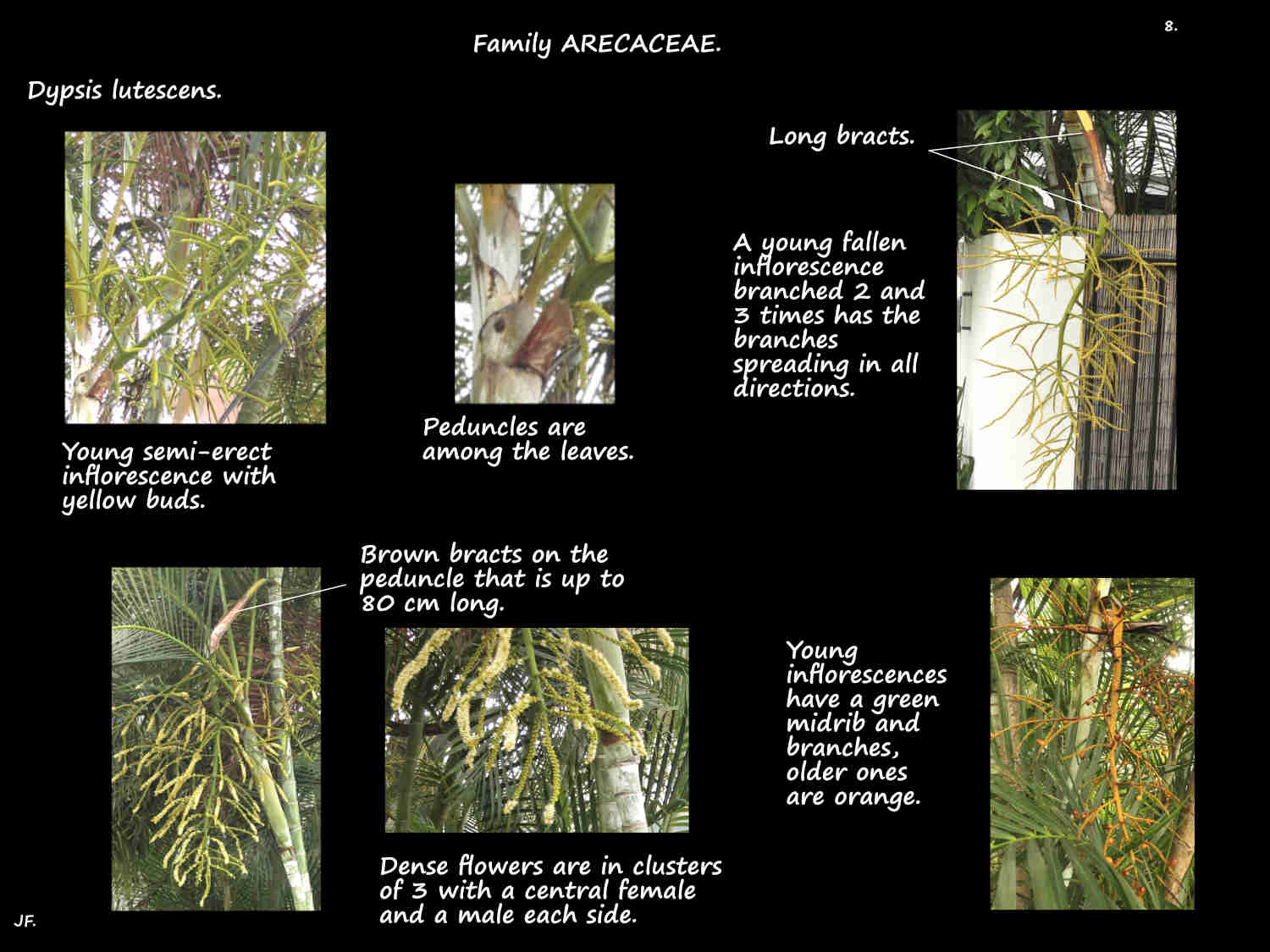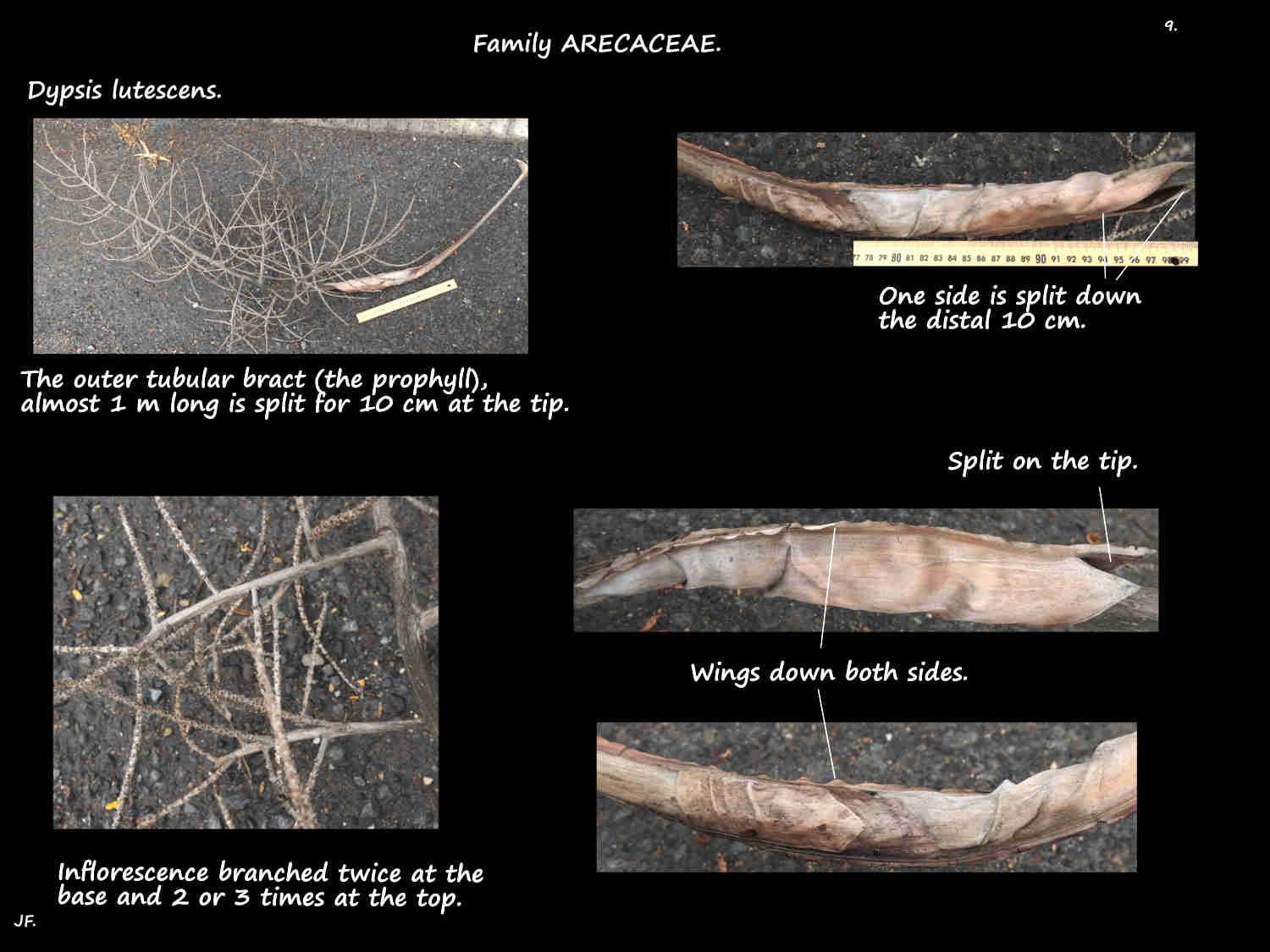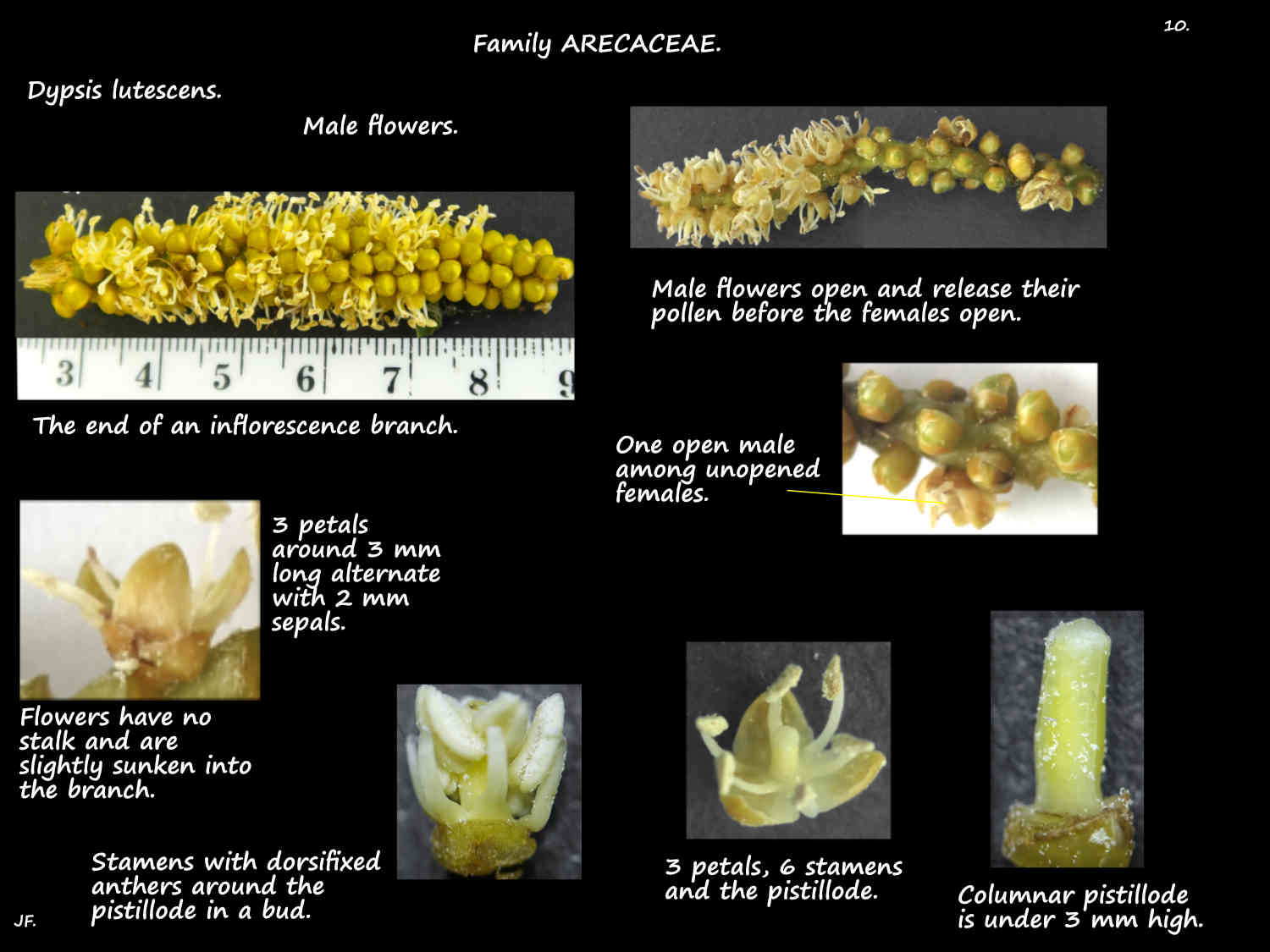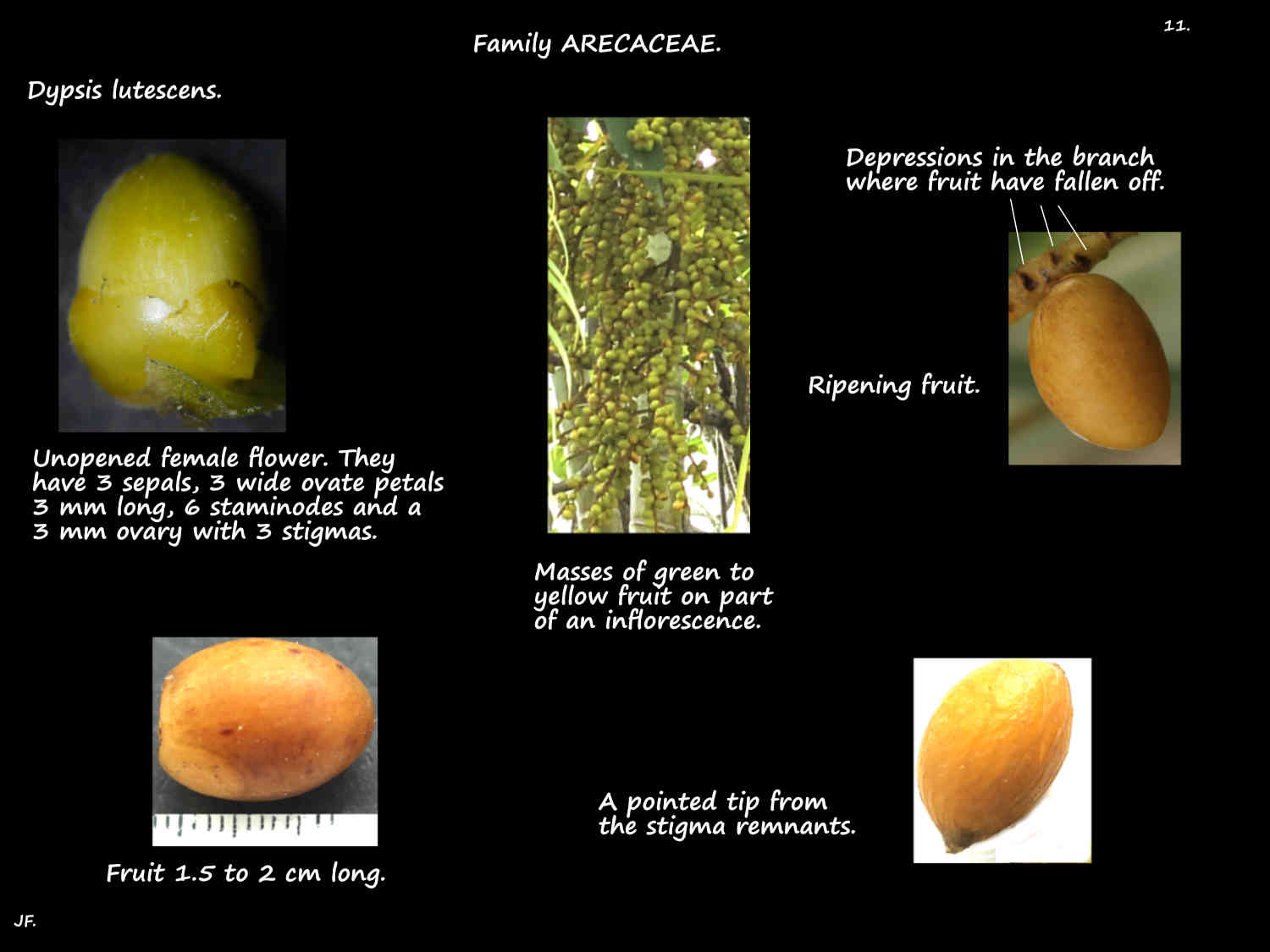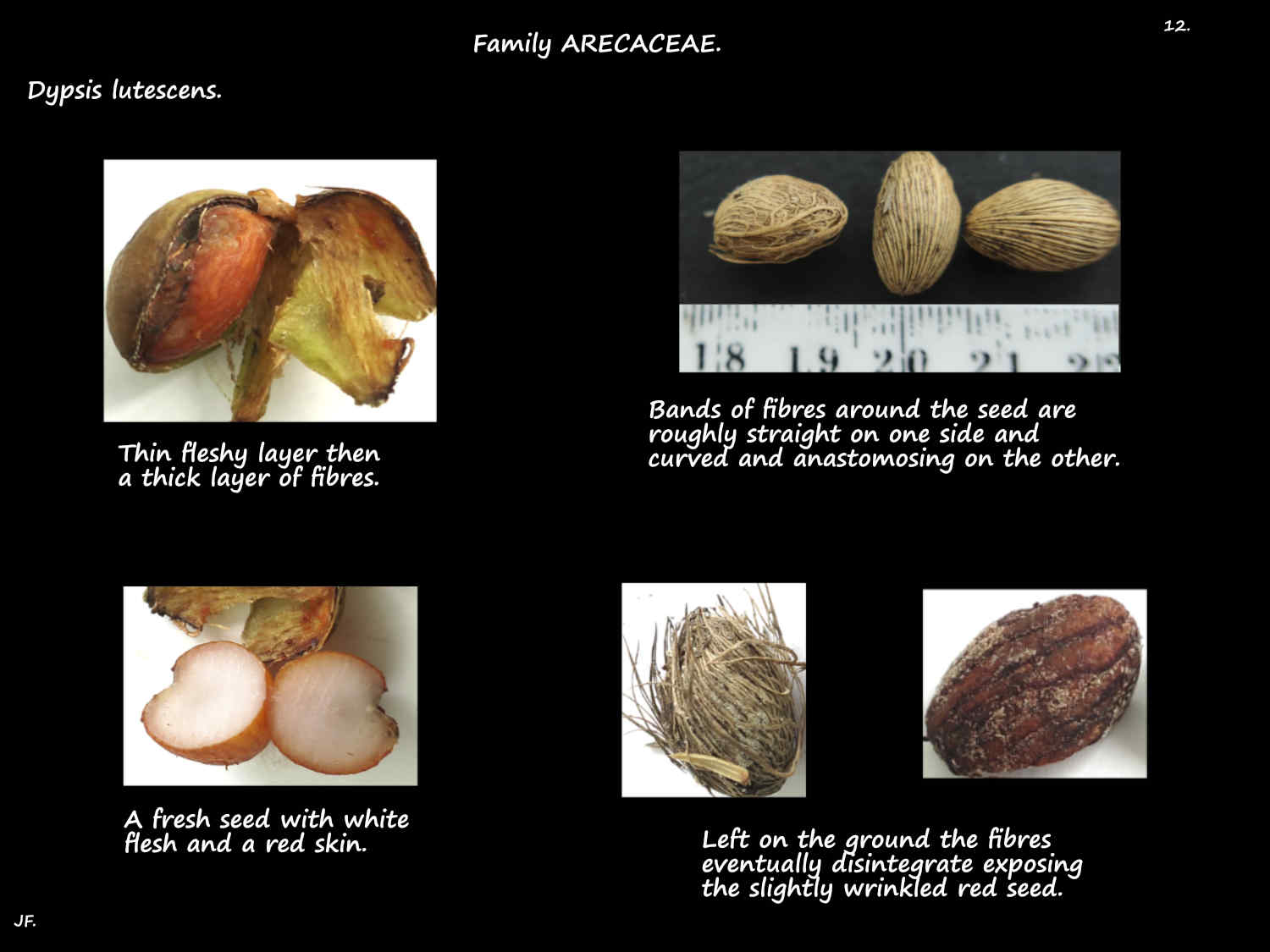The Yellow Cane palm is native to Madagascar.
It is also known as Chrysalidocarpus lutescens and the Areca palm.
It is a very common plant in Brisbane.
They are perennial clustering palms with a few cane-like stems.
Almost always unbranched they may have 1 or 2 short ones.
With numerous suckers at the base they can eventually form large dense clumps.
Palms can grow to around 10 m high with a trunk up to 15 cm across.
Smooth trunks have close ring scars at the top and up to 12 cm apart below.
New stems are green with a white waxy bloom while old ones are brown or grey.
On old palms the base of the trunk may be swollen.
Most only have a few leaves (fronds) but there can be up to around 10.
Leaves, up to 3 m long are in 3 ranks or occasionally a spiral.
New ones are erect but they become more arching as they lengthen.
Adult leaves often have a twisted midrib.
The upper surface of the long petiole has a deep groove with sharp edges.
Green then yellow to orange it has a dark scales at the base.
The wide petiole bases extend down the stem as open sheaths.
All the sheaths form a pale yellow-green crown shaft with a waxy white bloom.
Sheaths, up to 1 m long and 15 cm across have scales near the base.
The petiole extends into the blade as the green then yellow or orange midrib or rachis.
The midrib, up to 2 m long is round on the lower surface and angled on the upper.
Blades are pinnate with up to 60 linear sub-opposite leaflets on each side of the midrib.
Leaflet tips taper to a point and the terminal pair may be joined at the base.
Leaflet edges are folded back (reduplicate or ‘A’ shaped in cross section).
The whole blade becomes a ‘V’ shaped in cross section with leaflets along each side angled up.
Semi-erect then drooping inflorescences are on a peduncle that can be over 80 cm long.
Initially among the leaves, when with fruit they are at the base of the crown shaft.
The panicles, branched 3 (2 or 4) times are up to 60 cm long.
Branches, spreading in all directions are up to 30 cm long.
The tubular basal bract (prophyll) is up to 1 m long.
Split at the tip for 10 to 15 cm it has has narrow wings down it and some scales.
There are a few peduncular bracts further down the peduncle.
The next, up to 60 cm long has a beak at the tip.
Smaller open peduncular bracts are only a few cms long.
Those at the base of the branches are only a few mms long.
Densely packed flowers, in groups of 3 are slightly sunken into the branches.
The 2 side male flowers have 3 sepals under 2 mm long that are hooded and have a keel.
The 3 petals, around 3 mm long are fused at the base and have pointed tips.
The 6 stamens, around 4 mm long have dorsifixed anthers.
The pistillode is under 3 mm long.
The centre female flower, 3 mm across has 3 hooded sepals with no keel.
The 3 free widely ovate petals, around 3 mm long have a short thin point.
The 6 staminodes have anthers with no pollen and the 3 mm ovary has 1 ovule and 3 stigmas.
The berry-like oblong fruit, 1.5 to 2 cm long have a pointed tip.
Under the yellow skin is a loose layer of long fibres.
J.F.
